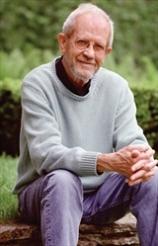Charlie Martz and Other Stories: The Unpublished Stories
Review
Charlie Martz and Other Stories: The Unpublished Stories
Picking up and reading CHARLIE MARTZ AND OTHER STORIES is the literary equivalent of the release of heretofore unheard audio tracks by your favorite musicians from the beginning of their careers. Here we have 15 short stories --- 11 of which are seeing the light of day for the first time --- that show Elmore Leonard flexing his creative abilities in ways that later became fully realized in such classics as RIDING THE RAP, GET SHORTY and MAXIMUM BOB. Much more than a curiosity, it is not simply a book of interest only to Leonard completists but rather stands proudly in place as the cornerstone of the foundation of what came later.
Peter Leonard --- Elmore’s son and a noteworthy author in his own right --- notes in his introduction to CHARLIE MARTZ the influence of Hemingway in his father’s early work. Just so. Peter tells a great story --- so good that you’re going to have to get the book to read it --- about how Hemingway’s work taught Elmore how to write. You can see it in two stories in particular.
"There is something for everyone in this collection, but the greatest thrill to be had is to see in each story the first tentative steps taken by a budding literary master."
“The Trespassers” and “For Something to Do” involve otherwise ordinary men who find themselves suddenly confronted by individuals with the intent and potential ability to take from them (to varying degrees) that which they hold most dear. “For Something to Do” is particularly strong. It’s a tale concerning a veterinarian who is suddenly confronted at his home by his wife’s ex-boyfriend and her brother, liquored up and vaguely resentful. A similar confrontation occurs in “The Trespassers,” though in this case the landowner is a very passive farmer who seemingly would go well out of his way to avoid confrontation with others, including a couple of hunters trespassing on his property. The men in both stories rise to the occasion when backed into a corner, though in somewhat different ways.
There is also a bullfighting story here, “The Bull Ring at Blisston,” which at first blush seems very different from Hemingway’s examinations of the activity but ultimately presents a vignette that brings forth a subtle demonstration of courage. Revenge is another motif of several of the stories, most notably the opening three tales, the first of which is separated from the other two by decades in time and thousands of miles in geography. “One, Horizontal” is set in Detroit in the 1950s, and concerns a man seeking revenge for great wrongs done to his younger brother, a gent who got caught up in the wrong crowd and pays the ultimate price. It contains the early formation of what became Leonard’s classic twists and turns.
“Charlie Martz” and the somewhat awkwardly titled “First Western Siesta in Paloverde” both feature an older and seemingly (deceptively) over-the-hill peace officer named Charlie Martz who is tasked with reining in the all-but-lawless southern New Mexico territory in the latter half of the 19th century. These two stories are somewhat similar, given that they both involve outlaws with scores to settle with Martz, who demonstrate in very different ways that he is a force with which to be reckoned. Martz, though nowhere near as brash and self-confident as Raylan Givens, his more famous contemporary counterpart, nonetheless possesses a great deal of his competence.
One can find bits and pieces of Leonard’s trademark brilliance, in varying sizes and shapes, scattered through each story. If there is one tale that seems to echo throughout Leonard’s subsequent work, it is “Time of Terror.” The story is set in Malaya in the 1950s, I believe, and involves a triangle of sorts (though not entirely of the romantic type) consisting of a Communist terrorist, a police lieutenant, and a Chinese Malaysian woman who plays the part of the viper in the crib --- in this case, the office of the police lieutenant, who is too blissfully unaware of what is occurring beneath his nose to understand what is going on as a devastating act is about to be executed. While different from Leonard’s subsequent work in subject matter, it is nonetheless a classic Leonard tale in every other sense, with lots of twists and turns that surprise but never let the reader lose the thread of the story. The ending is not the surprise; it is the manner of the ending that is the kicker. It reminds me, in some ways, of MAXIMUM BOB; see if you agree.
There is something for everyone in this collection, but the greatest thrill to be had is to see in each story the first tentative steps taken by a budding literary master. And, of course, the question must be asked: Is there anything else in the archives that have yet to see the light of day? We’ll keep watching and hoping.
Reviewed by Joe Hartlaub on June 19, 2015
Charlie Martz and Other Stories: The Unpublished Stories
- Publication Date: June 16, 2015
- Genres: Fiction, Short Stories
- Hardcover: 256 pages
- Publisher: William Morrow
- ISBN-10: 0062364928
- ISBN-13: 9780062364920





